Key Highlights
- Historic Lunar Achievement: Chandrayaan-3 successfully achieved soft landing on Moon’s south pole on August 23, 2023, making India the fourth nation to land on Moon and first to reach the challenging south polar region
- Cost-Effective Mars Triumph: Mangalyaan (Mars Orbiter Mission) accomplished in 2014 cost only $74 million, making it the cheapest successful Mars mission globally while achieving first-attempt Mars orbit insertion
- Human Spaceflight Milestone: Gaganyaan test flight scheduled for December 2025 with 80% of 9,000 critical tests completed, preparing India to become the fourth nation with independent human spaceflight capability
- Solar Observatory Success: Aditya-L1 launched September 2, 2023, reached Lagrange point L1 on January 6, 2024, providing continuous solar observations and 13 terabytes of valuable scientific data
- Commercial Space Leadership: ISRO launched over 430 foreign satellites, with PSLV-C37 setting world record by launching 104 satellites in single mission (2017), generating significant revenue through Antrix Corporation
Building India’s Space Foundation (1969-1980)
India’s space journey began with Dr. Vikram Sarabhai’s visionary leadership, who established ISRO in 1969 with the ambitious goal of harnessing space technology for national development. The early years focused on building indigenous capabilities rather than seeking international prestige, a philosophy that continues to define ISRO’s approach today.
Aryabhata, India’s first satellite, launched on April 19, 1975, with Soviet assistance marked the beginning of India’s space odyssey. Named after the ancient Indian mathematician, this 356-kilogram satellite demonstrated India’s commitment to space technology development despite limited resources and technological constraints.
The real breakthrough came on July 18, 1980, when Rohini Satellite (RS-1) became the first Indian satellite launched on an Indian rocket (SLV-3). This achievement established technological self-reliance and proved that India could design, build, and launch its own space systems without foreign dependence.
Dr. Sarabhai’s philosophy emphasized space technology as a tool for development rather than prestige projects. This practical approach laid the foundation for cost-effective innovation that would become ISRO’s hallmark in subsequent decades.
Launch Vehicle Evolution: From SLV to LVM3
Polar Satellite Launch Vehicle (PSLV): The Workhorse
The PSLV development revolutionized India’s space capabilities by providing reliable, cost-effective access to polar and Sun-synchronous orbits. Since its first successful flight in 1994, PSLV has achieved an impressive success rate while maintaining competitive pricing in the global market.
PSLV-C37’s record-breaking mission in February 2017 demonstrated unprecedented capability by launching 104 satellites in a single mission. This world record included 3 Indian satellites and 101 foreign satellites, showcasing ISRO’s precision in orbital mechanics and mission planning.
Commercial success through PSLV enabled ISRO to generate revenue while supporting global satellite deployment. Over 430 foreign satellites have been launched by Indian rockets, establishing India as a preferred launch provider for small and medium satellites.
Geosynchronous Satellite Launch Vehicle (GSLV): Heavy-Lift Capability
GSLV development addressed India’s need for launching heavy satellites to geostationary orbits without foreign dependence. The indigenous cryogenic engine development faced significant challenges due to technology denial regimes, forcing ISRO to develop capabilities independently.
GSLV Mk III (now LVM3) represents the pinnacle of Indian launch vehicle technology, capable of placing 4-tonne satellites in geostationary transfer orbit and 10-tonne payloads in low Earth orbit. This capability enabled ambitious missions like Chandrayaan-2 and upcoming Gaganyaan.
Human-rating of LVM3 for Gaganyaan required extensive modifications including crew escape systems, enhanced reliability, and safety protocols meeting international standards for human spaceflight.
Planetary Exploration: Reaching for the Moon and Mars
Chandrayaan Program: Lunar Exploration Mastery
Chandrayaan-1 (2008) marked India’s entry into planetary exploration by confirming water molecules on the lunar surface through NASA’s Moon Mineralogy Mapper. This discovery fundamentally changed understanding of lunar composition and potential resources.
Chandrayaan-2 (2019) demonstrated advanced capabilities with an orbiter, lander, and rover despite the lander’s communication loss during final descent. The orbiter continues providing valuable scientific data and supporting future missions.
Chandrayaan-3’s triumph on August 23, 2023, achieved historic soft landing near the Moon’s south pole, making India the first nation to reach this region. The Vikram lander and Pragyan rover conducted extensive scientific experiments, including sulfur detection and temperature profiling.
Scientific achievements include confirmation of sulfur in lunar soil, temperature measurements at various depths, and seismic activity monitoring. These discoveries provide crucial data for future lunar habitation and resource utilization.
Mars Orbiter Mission: Interplanetary Success
Mangalyaan (2014) achieved Mars orbit insertion on its first attempt, making India the first Asian nation to reach Mars and the first globally to succeed initially. The $74 million budget made it the cheapest successful Mars mission in history.
Mission objectives included studying Martian atmosphere, surface features, and searching for methane, which could indicate biological activity. The orbiter’s five instruments provided valuable data about Martian weather patterns and atmospheric composition.
Cost-effectiveness was achieved through frugal engineering, in-house technology development, and optimal trajectory planning using Earth’s gravity for acceleration toward Mars. This approach demonstrated that ambitious planetary missions could be accomplished with limited budgets. talentsprint
Gaganyaan: India’s Human Spaceflight Ambition
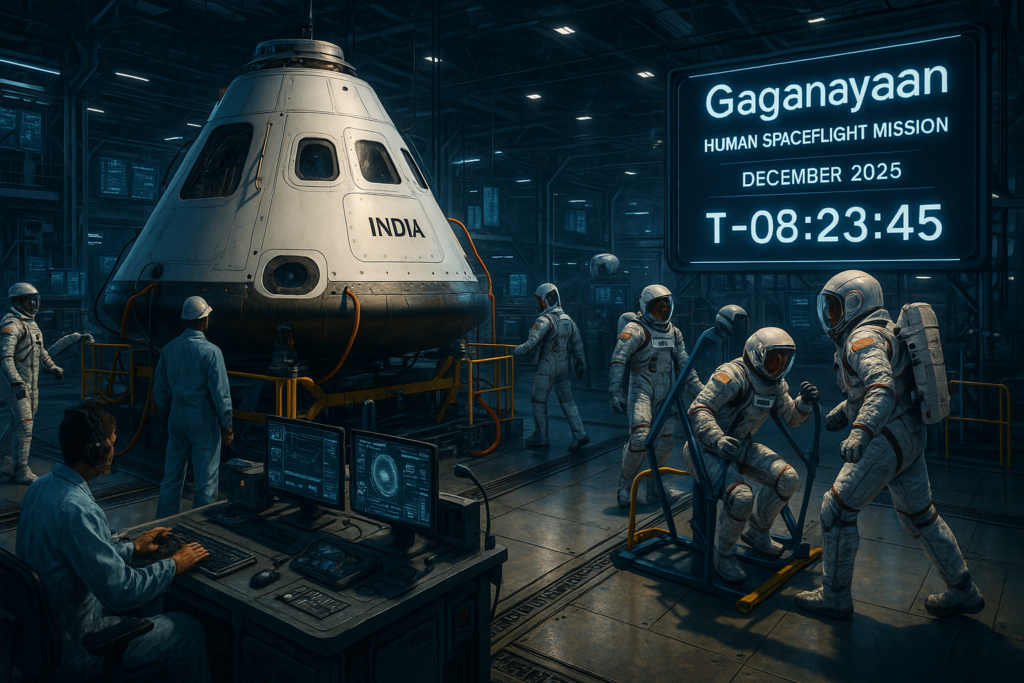
Mission Progress and Timeline
Gaganyaan mission represents India’s most ambitious project, aiming to send three astronauts to low Earth orbit for up to seven days. ISRO Chairman V. Narayanan confirmed December 2025 for the first unmanned test flight with 80% of critical tests completed.
Comprehensive testing involves 9,000 technical evaluations, with 7,700 already completed and remaining 2,300 scheduled for completion by March 2026. This rigorous testing ensures crew safety and mission success for India’s maiden human spaceflight.
Mission components include the Crew Module, Service Module, Crew Escape System, and Environmental Control and Life Support System. Human-rated LVM3 will launch the crew from Satish Dhawan Space Centre in Sriharikota.
Astronaut Training and Preparation
Four Indian astronauts underwent training in Russia at the Yuri Gagarin Cosmonaut Training Center, gaining experience in spaceflight operations, emergency procedures, and spacecraft systems. Additional training includes survival skills, medical protocols, and scientific experiment procedures.
Indigenous capabilities include Mission Control Center, crew training facilities, and recovery systems for safe return to Earth. Collaboration with international partners provides expertise while maintaining Indian leadership of the program.
Long-term objectives include establishing a space station, lunar missions with crew, and interplanetary exploration with human presence. Successful Gaganyaan will position India among elite spacefaring nations. thespacereview
Aditya-L1: Solar Observatory Excellence
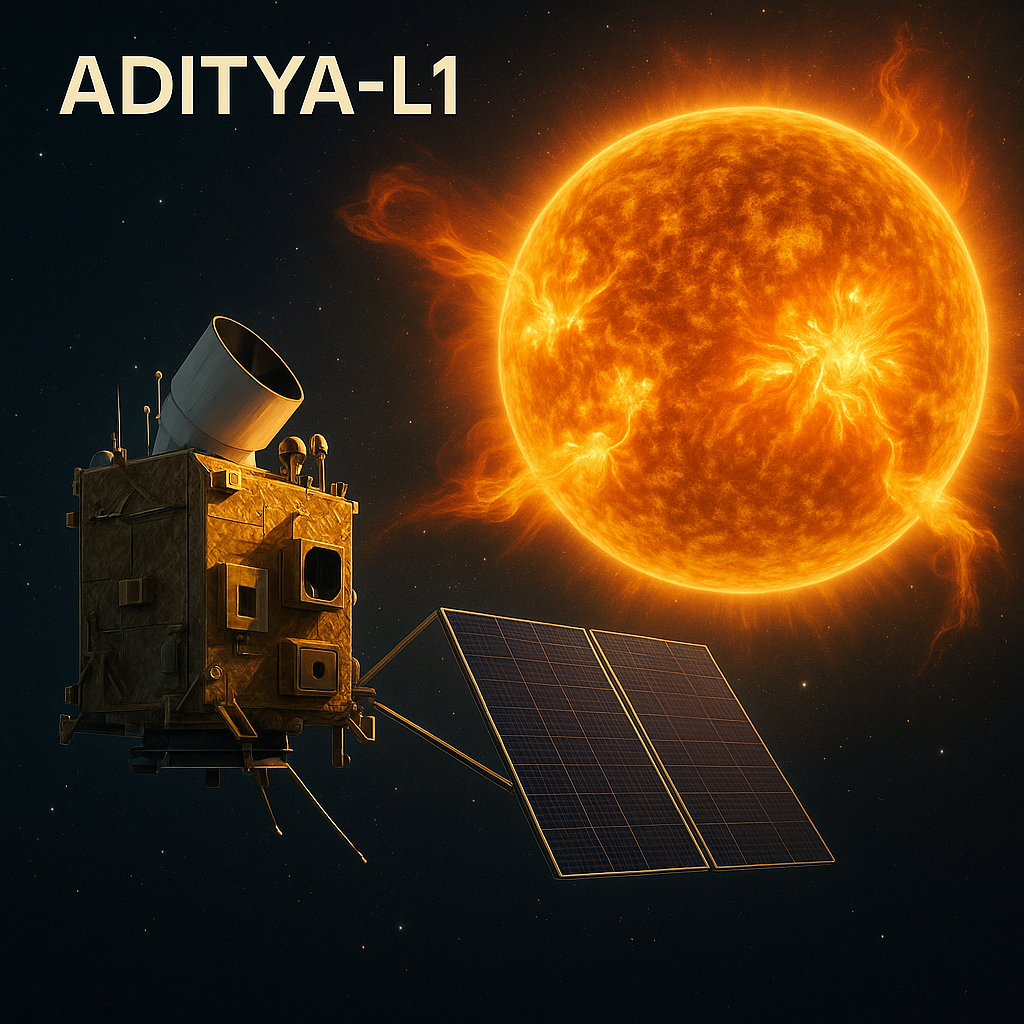
Mission Architecture and Deployment
Aditya-L1 launched on September 2, 2023, represents India’s first dedicated solar mission, positioned at Lagrange point L1 for uninterrupted solar observations. The spacecraft reached its designated halo orbit on January 6, 2024, after 126 days of precise navigation.
Seven scientific instruments aboard Aditya-L1 study different aspects of solar activity, including the corona, chromosphere, and solar wind. Visible Emission Line Coronagraph (VELC) and Solar Ultraviolet Imaging Telescope (SUIT) provide unprecedented observations of solar phenomena.
Strategic positioning at L1 point (1.5 million kilometers from Earth) enables continuous monitoring without Earth’s interference. This vantage point allows 24/7 solar observations and early warning of space weather events affecting Earth. isro
Scientific Achievements and Data
First-year operations generated 13 terabytes of scientific data shared with the global research community. Observations include X-class solar flares, coronal mass ejections, and solar particle dynamics providing insights into space weather.
Major discoveries include first-ever images of solar flare kernels in the photosphere and chromosphere using near-ultraviolet observations. Collaborative observations with ground-based telescopes enhance understanding of solar-terrestrial interactions.
Operational success validates India’s capability for long-duration deep space missions and precision navigation to Lagrange points. Station-keeping maneuvers demonstrate advanced spacecraft control in complex gravitational environments.
Commercial Space Success and Global Leadership
Antrix Corporation and Private Sector Integration
Antrix Corporation, ISRO’s commercial arm, has generated significant revenue by launching foreign satellites and providing space services. Cost-effective launches and reliable performance have attracted customers from over 30 countries.
IN-SPACe initiative promotes private sector participation in space activities, opening opportunities for Indian companies to contribute to space missions and satellite manufacturing. This public-private partnership model accelerates innovation while maintaining ISRO’s leadership.
Revenue generation from commercial launches supports India’s space program development and reduces dependence on government funding for routine operations. Success in international markets demonstrates competitive advantages of Indian space technology.
Record-Breaking Achievements
PSLV-C37 mission set a world record by deploying 104 satellites in a single launch, demonstrating unprecedented precision in orbital mechanics. This achievement included satellites from USA, Netherlands, Switzerland, Israel, Kazakhstan, and United Arab Emirates.
Mission complexity required precise timing for satellite separations and orbital insertions to avoid collisions while achieving desired orbits. Success showcased ISRO’s capabilities in complex multi-satellite deployments.
Global recognition of this achievement enhanced India’s reputation as a reliable launch provider and attracted additional commercial contracts. Follow-up missions continued demonstrating ISRO’s precision in multi-satellite operations.
Navigation and Communication Infrastructure
NavIC: Indigenous Navigation System
NavIC (Navigation with Indian Constellation) provides regional navigation services with better accuracy than GPS within Indian subcontinent. Seven satellites in geostationary and geosynchronous orbits ensure continuous coverage and strategic autonomy.
Applications include precision agriculture, disaster management, vehicle tracking, and timing services for financial transactions. Indigenous navigation reduces dependence on foreign systems while providing enhanced accuracy for critical applications.
GSAT series satellites support navigation services along with communication and broadcasting requirements. Integrated approach maximizes utility while optimizing costs for satellite constellation maintenance.
INSAT Program: Communication Revolution
INSAT satellite series revolutionized Indian telecommunications, weather forecasting, and television broadcasting since the 1980s. Multi-purpose satellites provide cost-effective solutions for diverse communication needs across India’s vast geography.
Weather forecasting capabilities enable accurate predictions for agriculture, aviation, and disaster preparedness. Real-time imagery and meteorological data support various sectors in planning activities and mitigating risks.
Broadcasting services connect remote areas to national networks, supporting education, healthcare, and governance initiatives. Satellite communication bridges digital divides and enables inclusive development.
Future Missions and Strategic Vision
Space Vision 2040: Ambitious Roadmap
India’s space vision extends to 2040 with ambitious plans including lunar base establishment, crewed Mars missions, and interplanetary exploration. Sustainable space development and resource utilization form core components of long-term strategy.
Bharatiya Antariksh Station planned for 2035 will provide permanent human presence in low Earth orbit. Space station capabilities include scientific research, technology demonstration, and staging point for deep space missions.
Private sector integration aims for 50 rocket launches annually within five years, significantly increasing launch frequency from current levels. Commercial partnerships will accelerate technology development and reduce costs.
Technology Development Priorities
Reusable launch vehicles development aims to reduce launch costs dramatically while maintaining reliability. Successful testing of scramjet engines and reusable technologies advances toward operational systems.
Semiconductor manufacturing for space applications ensures supply chain security and advanced capabilities for future missions. Indigenous production reduces dependence on foreign components while supporting strategic autonomy.
Advanced propulsion systems including electric propulsion and nuclear thermal enable efficient deep space exploration. Research into innovative technologies positions India for next-generation space missions.
Global Impact and International Cooperation
South-South Cooperation and Capacity Building
ISRO’s cost-effective approach enables developing countries to access space technology for national development. Technology transfer and capacity building programs support global development while strengthening international relationships.
Climate monitoring through Indian satellites provides crucial data for global climate research and disaster management. Earth observation capabilities support sustainable development goals and environmental protection.
Educational initiatives and scientific collaboration with international partners advance space science while building global expertise. Data sharing and joint missions benefit worldwide scientific community.
Competitive Advantages and Market Position
Frugal innovation and cost optimization make Indian space services highly competitive in global markets. Engineering excellence combined with affordable pricing attracts international customers seeking reliable launch services.
Technological sovereignty in critical space technologies provides strategic advantages while enabling independent decision-making. Indigenous capabilities reduce vulnerability to international sanctions or technology restrictions.
Growing market share in global space economy positions India for increased influence in international space governance and policy development. Success in commercial markets validates Indian space technology quality and reliability. ibef
Challenges and Future Outlook
Technical and Operational Challenges
Scaling launch operations to 50 annual missions requires significant infrastructure development and workforce expansion. Manufacturing capacity, testing facilities, and launch infrastructure need substantial enhancement.
Maintaining quality while increasing volume presents operational challenges requiring robust processes and quality assurance systems. Balance between speed and reliability remains crucial for sustaining success.
Human spaceflight operations demand new capabilities in life support, crew training, and emergency response. Transition from robotic to crewed missions requires cultural and technical adaptations.
Strategic Opportunities
Emerging technologies including artificial intelligence, quantum communication, and advanced materials offer opportunities for breakthrough innovations. Early adoption and development can provide competitive advantages.
International partnerships in lunar exploration, Mars missions, and asteroid mining can share costs while advancing capabilities. Collaborative approach enables ambitious missions beyond individual national capabilities.
Commercial space economy growth creates opportunities for Indian companies to participate in global value chains while developing indigenous capabilities. Public-private partnerships can accelerate innovation and market development.
Conclusion
ISRO’s remarkable journey from Aryabhata in 1975 to Chandrayaan-3’s lunar triumph exemplifies India’s transformation into a global space power through cost-effective innovation and strategic vision. The organization’s achievements, including the $74 million Mars mission and record-breaking 104-satellite launch, demonstrate that ambitious space exploration can be accomplished with limited resources through frugal engineering and innovative approaches.
Chandrayaan-3’s historic success in achieving soft landing on the Moon’s south pole on August 23, 2023, established India as the fourth nation to land on the Moon and the first to reach this challenging region. The mission’s scientific achievements, including sulfur detection and temperature profiling, provide valuable data for future lunar exploration and resource utilization.
Aditya-L1’s successful deployment at Lagrange point L1 demonstrates India’s capability for complex deep space missions and precision navigation. The solar observatory’s 13 terabytes of scientific data contribute to global understanding of solar phenomena and space weather, while validating advanced spacecraft technologies.
Gaganyaan’s progress toward December 2025 test flight with 80% of critical tests completed positions India to become the fourth nation with independent human spaceflight capability. This ambitious project will open new frontiers for scientific research, technology development, and international cooperation.
Commercial success through launching over 430 foreign satellites and achieving world records establishes India as a preferred launch provider while generating revenue for program sustainability. PSLV’s reliability and cost-effectiveness attract international customers seeking dependable space services.
ISRO’s philosophy of space technology for development rather than prestige continues driving practical applications in telecommunications, weather forecasting, navigation, and disaster management. NavIC’s regional accuracy and INSAT’s communication services directly benefit millions of Indian citizens.
Future ambitions including Bharatiya Antariksh Station by 2035, crewed lunar missions, and 50 annual launches within five years demonstrate India’s commitment to space leadership. Private sector integration through IN-SPACe will accelerate innovation while maintaining ISRO’s guidance.
Global impact extends beyond Indian achievements through South-South cooperation, climate monitoring, and capacity building for developing nations. ISRO’s success proves that strategic vision, technical excellence, and cost optimization can overcome resource constraints to achieve extraordinary results.
Challenges in scaling operations, maintaining quality, and developing new technologies require continued innovation and international collaboration. Success in addressing these challenges will determine India’s position in the rapidly evolving global space economy.
ISRO’s legacy of transforming impossible dreams into achievable realities through indigenous innovation and strategic partnerships provides a blueprint for other nations seeking space capabilities. The organization’s journey from borrowed rockets to lunar landings demonstrates that persistence, vision, and innovative thinking can overcome any obstacle.
📝 Mains-style Questions
- GS Paper III (Science & Tech):
- “India’s space program has evolved from a tool for development to a symbol of strategic and technological leadership.” Discuss with reference to key milestones and missions.
- GS Paper II (International Relations):
- Evaluate the role of India’s space program in enhancing soft power and South-South cooperation through initiatives like foreign satellite launches and disaster monitoring.
- GS Paper III (Science & Tech + Security):
- How has India’s space program contributed to national security, navigation, and disaster management? Explain with examples.
- Essay Paper:
- “From Aryabhata to Aditya-L1: India’s journey towards becoming a global space power.”
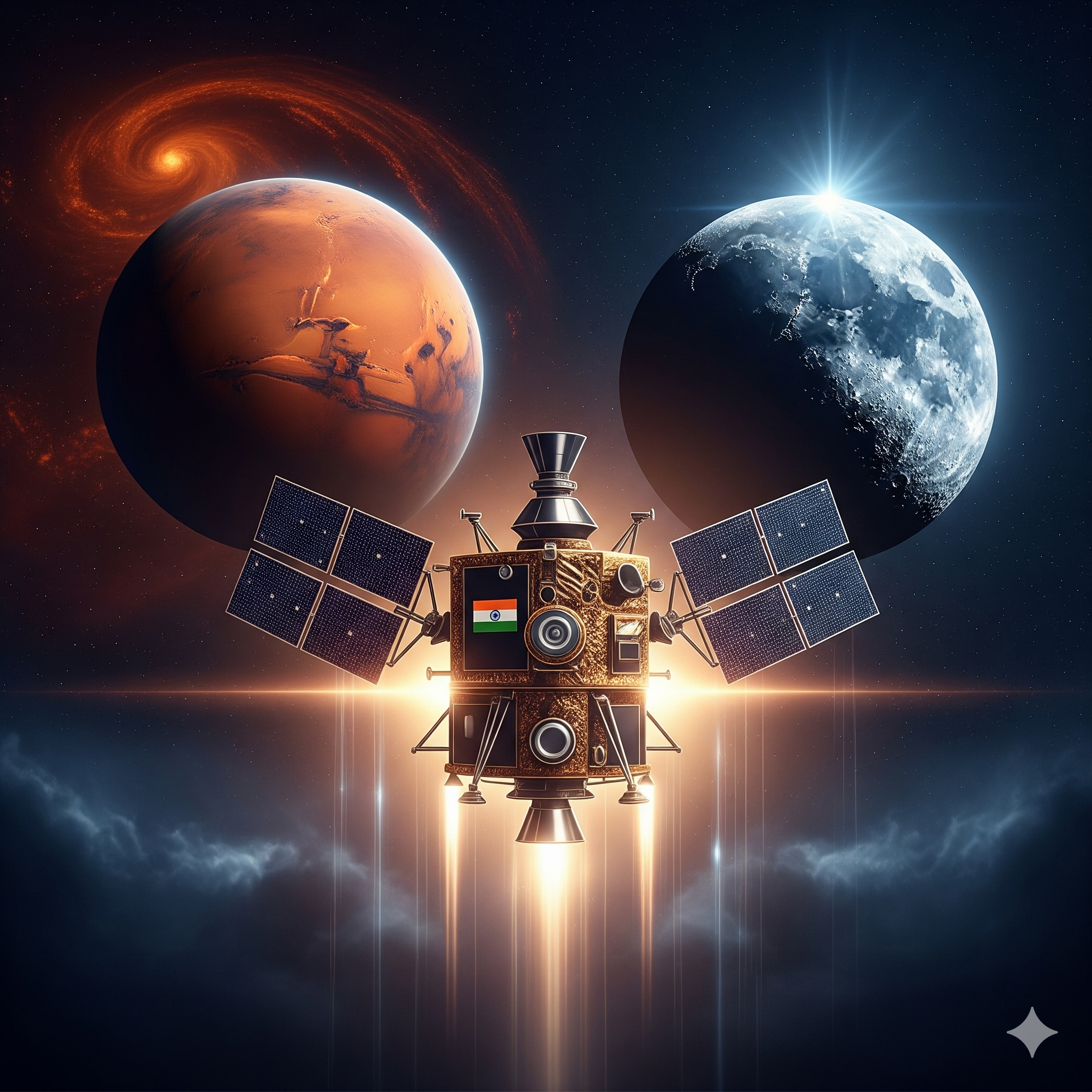

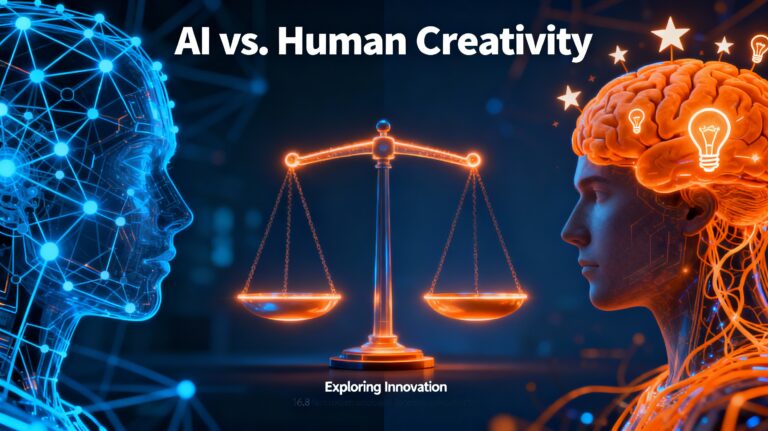
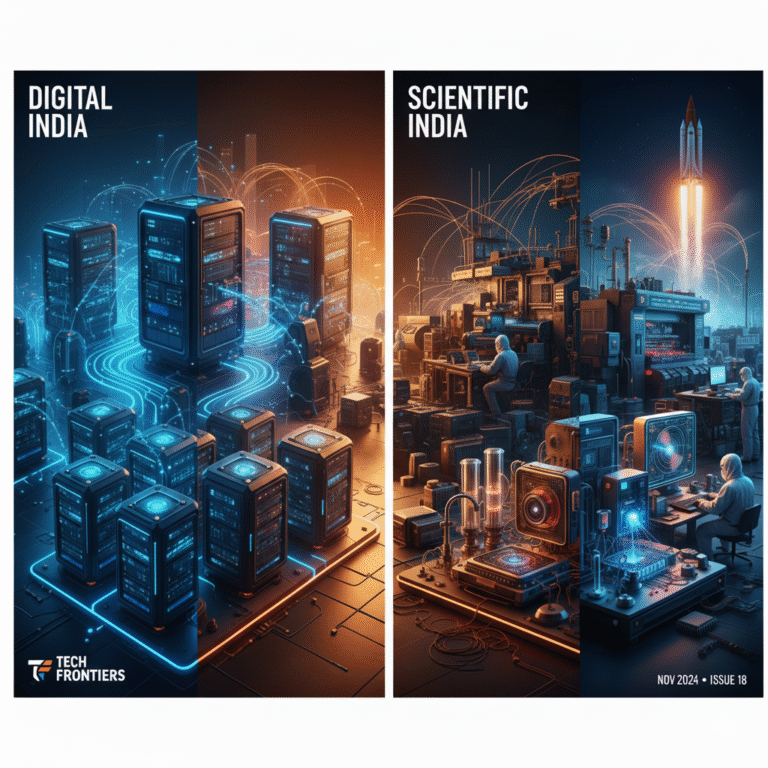

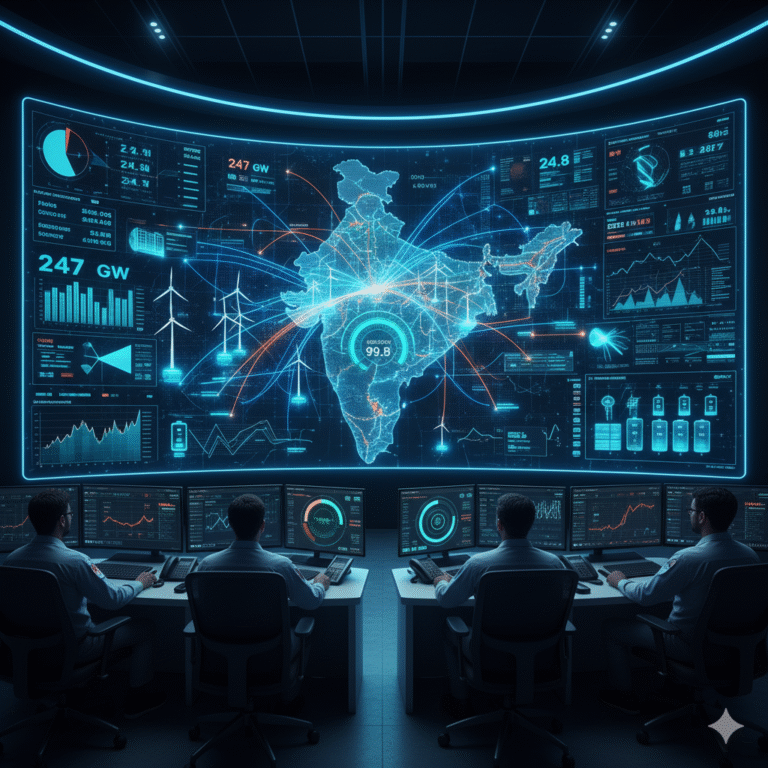



+ There are no comments
Add yours